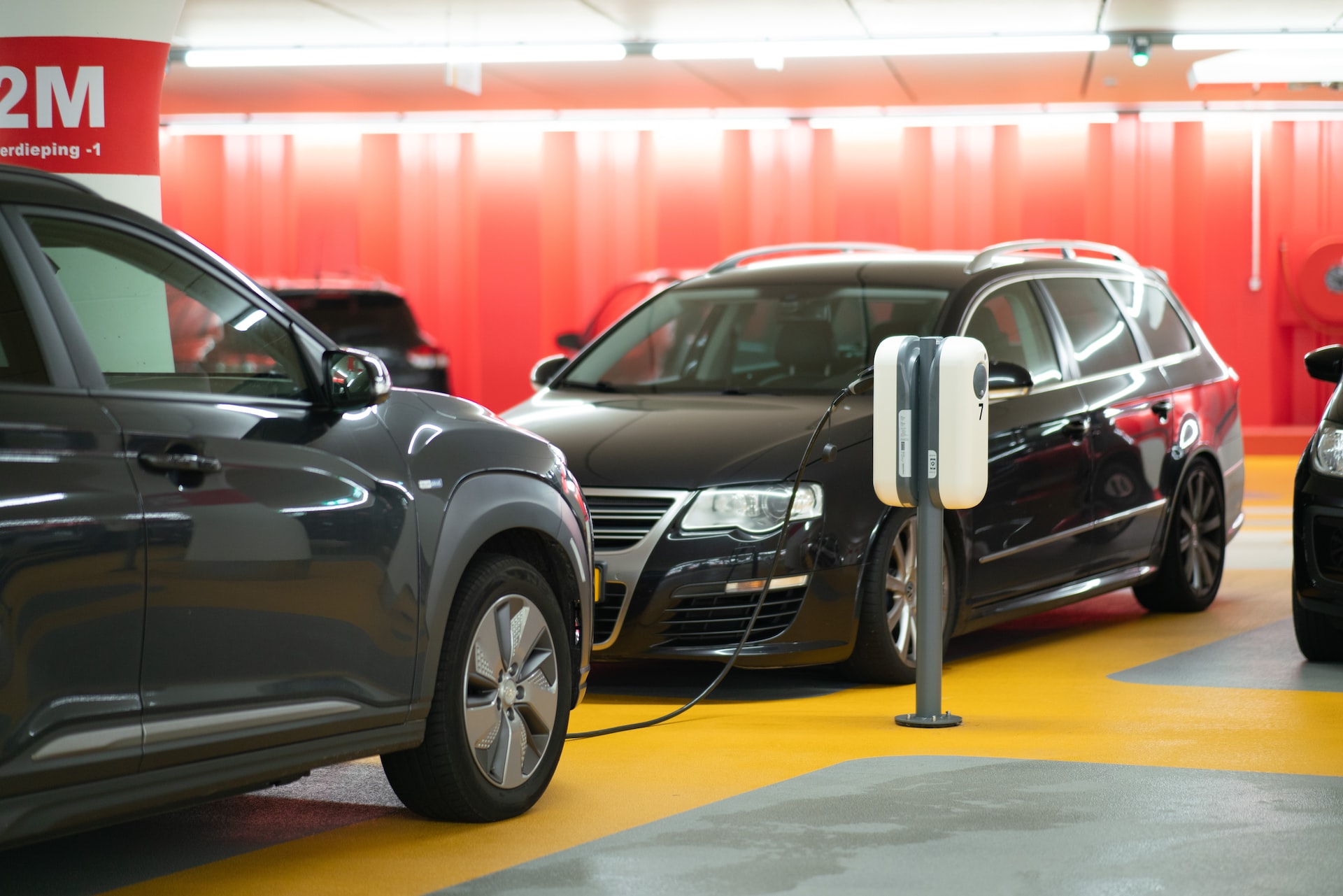Lithium-ion batteries (LIB) have become the dominant technology in phones, laptops, scooters, electric bikes, electric vehicles, as well as large-scale battery energy storage facilities. As such, it is important to systematically consider their impact on fire safety inside buildings, especially since electrification is a critical part of the effort to limit climate change.
The root of the fire safety challenge is thermal runaway in LIBs. This is a process in which overheating, improper charging, construction defects, mechanical abuses, deterioration due to age and use, and similar causes can start an unstable process resulting in the sudden release of hazardous combustible and explosive gases and the initiation of fire.
Different LIB systems can range from highly reliable to less reliable depending on how they are designed, constructed, and used, as well as their safety features. However, the exponential growth in the number of batteries and the high variability in their types and conditions of use means there will be more fires that are related to this technology. Therefore, we need to understand the challenge at different scales and how it should lead to changes in design and construction.
Fire safety concerns with small-, medium-, and large-scale lithium-ion battery applications in buildings
In terms of small-scale applications of this technology, electric mobility devices such as scooters and bikes are widely used, especially in dense urban areas, as a convenient, inexpensive, and rapid means of transportation. Oftentimes, they are stored close to or just behind apartment doors and may be used with non-standard chargers. These devices can initiate fires that are fast and furious with no warning. Because these fires often have a jet flame component and sometimes throw off flammable pieces, they can spread quickly. When stored next to doors, these devices can prevent building occupants from escaping and complicate fire service response and rescue.
By contrast, typical building fires start locally and are slow moving, giving occupants time to respond or escape. This risk is not theoretical. New York City is already experiencing a dramatic rise in the number of fires caused by electric mobility devices. Frequently, improper charging or placement of these devices has contributed to the risk. At this scale, improvements to manufacturer standards, public education, and building rules on where and how electric mobility devices may be stored or charged can help improve fire safety.
At the medium-scale level, individual electric vehicles and small battery energy storage systems (BESS) for single-family residences can have considerable fire potential and require special attention to mitigate the risk. In addition to manufacturer standards, strategies involving appropriate use of fire protection systems, as well as creating distance between the LIB system and the occupied spaces of a building (e.g., separation of parking spaces, installation of BESS outside occupied spaces), can help reduce the threat of fire.
In large-scale applications, large BESS or parking garages with multiple electric vehicles inside a building can pose a significant fire safety challenge. The nature of hazards associated with these systems is different from that of typical fires. These differences can greatly change the risk profile for buildings, their occupants, and first responders. The challenge is driven by the combined fire, explosion, and hazardous material risk of these events. The total heat release of a gas-fueled car and an electric car might not be very different. However, the fire from an electric car can start fast and furious, with jet flames that make it easier to set the next car ablaze as well.
It takes much more water and time to extinguish a fire from an electric car. In addition, any part of the combustible gasses released from the electric vehicle that does not burn could contribute to an unexpected explosion. A parking area, with multiple electric cars in proximity to one another, may experience a fire that spreads much faster, is more difficult to extinguish (due to safety and extinguishment challenges for the fire service) and is, therefore, likely to burn longer. A large-scale LIB BESS inside a building could pose similar challenges.
For this large-scale challenge, there is a need for greater awareness, as well as increased collaboration between stakeholders (including regulating bodies, first responders, technical associations, owners and developers, and design professionals) to fully define the extent of the challenge and develop an outline of solutions. This is a fast-growing and quickly changing environment, and we need proactive, positive engagement from all involved.
Risk mitigation measures for electric vehicles, battery energy storage systems in buildings
Fortunately, for both electric vehicles in indoor parking spaces and large-scale BESS locations inside buildings, some guidance for risk mitigation is clear. It is helpful that the location of risk for both scenarios is known, allowing for targeted design and mitigation approaches to these spaces. Structurally, the building may be designed to withstand longer fires, and structural hardening can be considered if there is an explosion potential.
For fire suppression, various water-based and non-water-based systems are available, each with pros and cons for their use in a given context.
The firefighting infrastructure in a building can also be improved to ensure adequate water through standpipes, as well as safe access for fire service given the unique risks of the LIB-driven fires.
Finally, there are various options to improve the safety of building occupants through design, whether through increasing redundancy of means of egress in high-risk locations, hardening or changing the location of the means of egress as needed, or designing for a safe shelter-in-place strategy inside the building.
We need positive engagement and collaboration between everyone involved, including the authorities having jurisdiction and regulating bodies to recognize the challenge and allow for successful development and application of creative solutions that are appropriate to the context of each building. This is essential to allow for sustained, safe, and expanded adoption of technologies that are important to our fight against climate change.
About the Authors
Ali Ashrafi, PhD., PE, is a Principal, and Elisa Paone, PE, CFEI, is a Vice President with Thornton Tomasetti.
Related Stories
Mass Timber | Jun 10, 2024
5 hidden benefits of mass timber design
Mass timber is a materials and design approach that holds immense potential to transform the future of the commercial building industry, as well as our environment.
K-12 Schools | May 13, 2024
S.M.A.R.T. campus combines 3 schools on one site
From the start of the design process for Santa Clara Unified School District’s new preK-12 campus, discussions moved beyond brick-and-mortar to focus on envisioning the future of education in Silicon Valley.
Products and Materials | Apr 30, 2024
Top building products for April 2024
BD+C Editors break down April's top 15 building products, from CLiC On-demand Privacy Glass to NovaCore Thermal Insulated Sheathing.
Fire-Rated Products | Apr 16, 2024
SAFTI FIRST launches redesigned website
SAFTI FIRST, leading USA-manufacturer of advanced fire rated glass and framing systems, is pleased to announce the launch of its newly redesigned website, safeglassforschools.com.
75 Top Building Products | Dec 13, 2023
75 top building products for 2023
From a bladeless rooftop wind energy system, to a troffer light fixture with built-in continuous visible light disinfection, innovation is plentiful in Building Design+Construction's annual 75 Top Products report.
Products and Materials | Aug 31, 2023
Top building products for August 2023
BD+C Editors break down 15 of the top building products this month, from frameless windscreens to smart fixture mount sensors.
Fire-Rated Products | Aug 14, 2023
Free download: Fire-rated glazing 101 technical guide from the National Glass Association
The National Glass Association (NGA) is pleased to announce the publication of a new technical resource, Fire-Rated Glazing 101. This five-page document addresses how to incorporate fire-rated glazing systems in a manner that not only provides protection to building occupants from fire, but also considers other design goals, such as daylight, privacy and security.
Sponsored | Fire and Life Safety | Jul 12, 2023
Fire safety considerations for cantilevered buildings [AIA course]
Bold cantilevered designs are prevalent today, as developers and architects strive to maximize space, views, and natural light in buildings. Cantilevered structures, however, present a host of challenges for building teams, according to José R. Rivera, PE, Associate Principal and Director of Plumbing and Fire Protection with Lilker.
Codes and Standards | Dec 29, 2022
New York City multifamily owners concerned over fires caused by e-bikes
In 2022, there have been nearly 200 fires and six deaths in New York City caused by lithium-ion batteries used in mobility devices such as electric bikes and scooters.
Sponsored | Resiliency | Dec 14, 2022
Flood protection: What building owners need to know to protect their properties
This course from Walter P Moore examines numerous flood protection approaches and building owner needs before delving into the flood protection process. Determining the flood resilience of a property can provide a good understanding of risk associated costs.
















